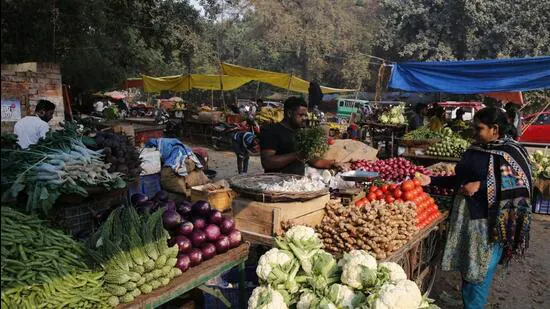27 august 2024 : A panel appointed by the Union government to revise the Consumer Price Index (CPI), which monitors fluctuations in retail prices, is expected to change the base year for measuring inflation from 2012 to 2024. Additionally, it is anticipated that the weight allocated to food items will be reduced to reflect evolving consumption trends, according to two officials familiar with the situation.
The 22-member panel established by the Ministry of Statistics and Programme Implementation is currently engaged in the process of selecting a new base year for various price indices, including the Wholesale Price Index (WPI), which assesses producer prices, as well as determining updated weights for the commodities included in these indices.
The base year has to be a so-called normal year, one during which we don’t see too much divergence. So, we are reviewing such normal years after the pandemic. It will likely be 2024,” a panellist said, requesting anonymity.
A revision of the headline inflation gauge was necessary because the 2012 threshold is outdated and the basket of items consumed by households has expanded since 2012, when the CPI’s composition was last revised.
Since prices keep varying, economists fix a base year in which all values are held constant, to track indices such as inflation. The base year is a reference against which all other values are compared. In an index such as CPI, the base year is usually assigned a value of 100.
Currently, while the base year for CPI is 2012, it is 2011-12 for other indices such as gross domestic product (GDP) and Index of Industrial Production (IIP). The government is separately examining whether it is possible to have the same base year for all key economic indicators.
The panel is reworking weights assigned to various consumer goods and services based on the findings of the Household Consumption Expenditure Survey (HCES) 2022-23, which revealed a shift in consumption patterns of an average household.
The food and beverage category makes up 54.2% of the current CPI basket. However, the 2022-23 HCES, the first in a decade, showed that the share of food in the rural consumption basket has dipped below 50%, to 46.4% (CHECK). In the urban consumption basket, the proportion of spending on food relative to other items dropped to 39.2%.
“Therefore, it is important to rationalise the weight assigned to food in CPI in light of changing consumption trends. The weightage to the food category may be cut by five or six percentage points,” a second official said.
If the change in the CPI base year leads to a drop in the weight of food items — it is a given that it will, although the exact magnitude is not certain — it could lower headline inflation.
Despite core inflation being near its lowest-ever levels, the headline CPI has frustrated monetary policy by consistently staying above RBI’s actual target of 4%. The finance ministry’s economic survey did bring up the idea of tracking core inflation — the non-food and non-fuel portion of the CPI basket — but RBI rejected the idea.
The benchmark inflation rate fell to a five year low of 3.5% in July, the lowest since August 2019, when it was 3.28%, a drop that was the result of a favourable base effect, rather than a radical improvement in the inflationary environment.
As incomes rise, the spending of households on food doesn’t increase proportionately. Their spending on food as a proportion of overall expenditure decreases, which is widely known as Engel’s law.
Moreover, within the food basket, spending on protein-rich items and processed foods tends to increase at higher levels of income, while that of basic staples comes down, in line with what is known as Benette’s law.
“These changes must be accurately captured by CPI, which is the basis for many macroeconomic policies and decisions affecting the common man, such as monetary and fiscal policies,” said Robin Tadli, an economist with the Indian Statistical Institute.

